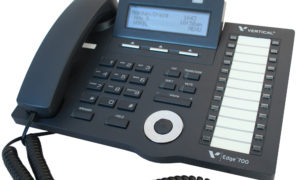Enhancing Communication and Security: Viking Electronics in the Business Environment
Introduction:
In today’s fast-paced and interconnected business world, effective communication and robust security systems are vital for the smooth operation of any organization. Viking Electronics, a leading provider of communication and security solutions, offers a comprehensive range of products designed to meet the unique needs of businesses. This article explores the diverse range of Viking Electronics products and how they can be utilized to enhance communication and security in a business environment.
I. Overview of Viking Electronics:
1.1 Company Profile: Viking Electronics is a renowned manufacturer of innovative communication and security devices established in 1969. With over 50 years of experience, Viking Electronics has developed a wide array of products specifically designed to cater to the needs of businesses across various industries.
1.2 Product Range: Viking Electronics Enhancing Communication and Security offers an extensive product portfolio that includes:
a) Emergency Phones: Viking’s emergency phones provide reliable and instant communication in critical situations, ensuring safety and security within business premises.
b) VoIP Phones: These phones leverage Voice over Internet Protocol (VoIP) technology to facilitate cost-effective and high-quality voice communication.
c) Door Entry Systems: Viking’s door entry systems enable secure access control, allowing authorized personnel to enter designated areas while restricting unauthorized access.
d) Mass Notification Systems: Viking’s mass notification systems deliver important messages, alerts, and announcements quickly and efficiently to employees in emergency situations.
e) Paging Systems: Viking’s paging systems provide clear and efficient communication across various departments within a business, promoting productivity and coordination.
II. Utilizing Viking Electronics in a Business Environment:
2.1 Enhancing Internal Communication: Efficient communication among employees is crucial for a successful business. Viking Electronics products can facilitate seamless communication within a business environment:
a) Intercom Systems: Viking’s intercom systems allow instant and reliable communication between different departments, ensuring smooth coordination and teamwork.
b) VoIP Phones: VoIP phones enable cost-effective long-distance communication, ensuring employees can stay connected and collaborate effectively regardless of their geographical location. Enhancing Communication and Security
c) Paging Systems: Viking’s paging systems offer a simple yet effective way to relay important messages or announcements across the organization, enhancing overall communication efficiency.
2.2 Securing the Business Premises: Maintaining a secure environment is paramount for any business. Viking Electronics offers a range of products to bolster security measures within an organization:
a) Emergency Phones: These devices can be strategically placed throughout the premises to provide employees with a reliable means of communication during emergencies, ensuring prompt response and assistance.
b) Door Entry Systems: Viking’s door entry systems enable businesses to control access to restricted areas, enhancing security by allowing only authorized personnel to enter.
c) Security Cameras: Viking Electronics provides high-quality security cameras to monitor critical areas, deterring potential threats and providing valuable evidence in case of security breaches.
III. Benefits and Advantages of Viking Electronics Products:
3.1 Reliability and Durability: Viking Electronics products are known for their robust construction and reliability. They are built to withstand harsh environmental conditions, ensuring consistent performance and longevity.
3.2 Customizability: Viking Electronics understands that businesses have unique requirements. Their products can be customized to suit specific needs, ensuring maximum efficiency and effectiveness in different business environments.
3.3 Ease of Installation and Integration: Viking Electronics products are designed for ease of installation and integration into existing communication and security systems. This minimizes disruption and allows businesses to seamlessly incorporate these devices into their operations.
3.4 Cost-Effectiveness: Viking Electronics offers cost-effective solutions that provide exceptional value for money. The company’s products are competitively priced, making them accessible to businesses of all sizes. Enhancing Communication and Security
Conclusion:
In today’s business environment, effective communication and robust security systems are essential for the success and growth of any organization. Viking Electronics, with its extensive range of communication and security products, offers businesses reliable and innovative solutions. By leveraging Viking Electronics products, businesses can enhance internal communication, improve coordination, and strengthen security measures. With their commitment to quality and customer satisfaction, Viking Electronics continues to be a trusted partner for businesses seeking advanced communication and security solutions. Enhancing Communication and Security













